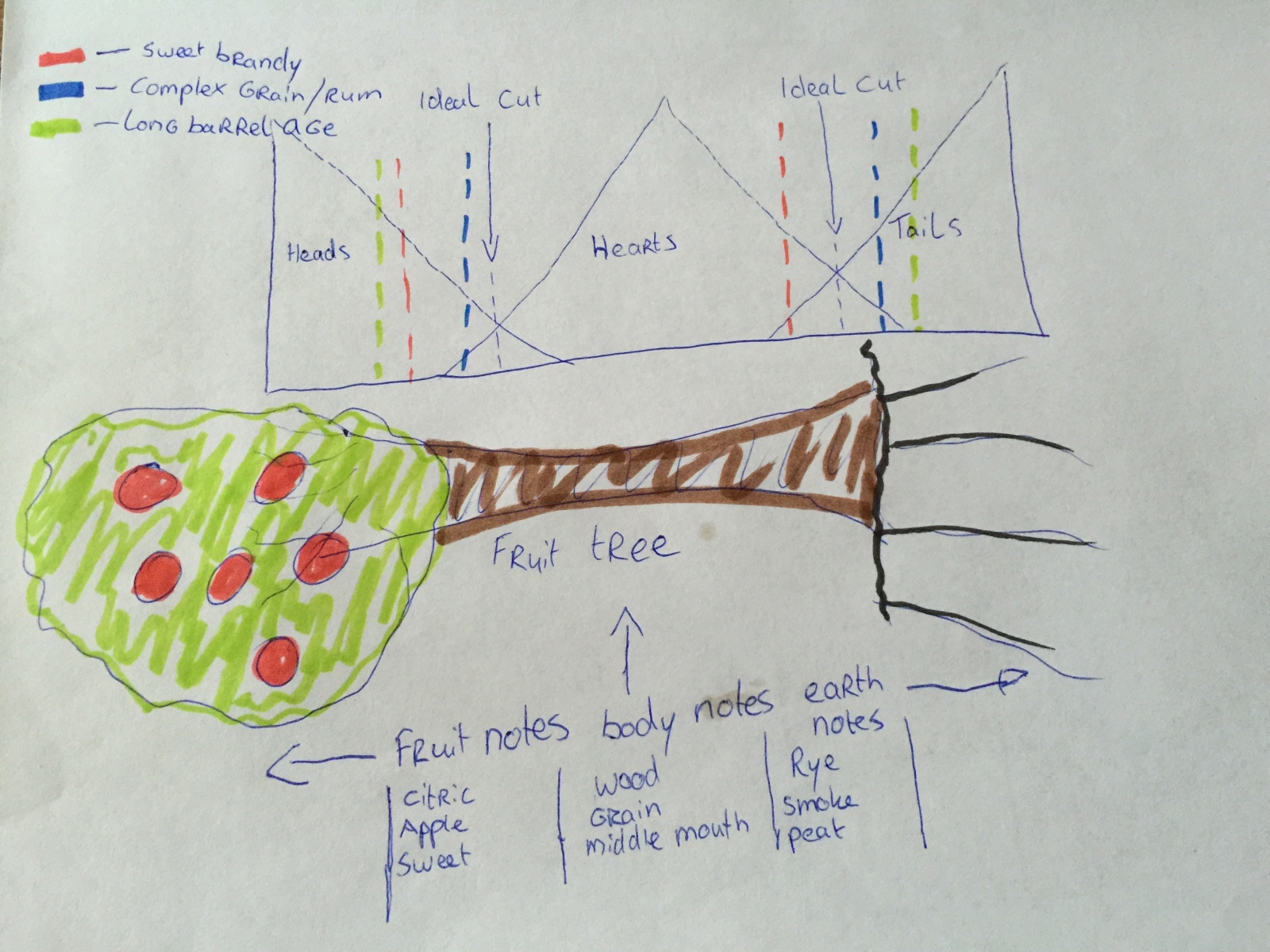Odin on Gin (4)
03 February 2017
Vapor vs. Boiler Infusion
Onwards with gin! Vapor vs. boiler infusion, where the first stands for a distillation cycle with the herbs and berries in the vapor path, and where "boiler infusion" stands for a situation where the herbs and berries are put in the diluted GNS that's about to be distilled.
I feel the discussion of vapor vs. boiler infused gin follows quite naturally on the thinking about louched vs. non-louched gins. Vapor infusion has seen a steep rise in attention over boiler infusion, over the last years. Mainly, in my opinion, there are two reasons for that. First, vapor infusion is a great way to create a gin without the "issues" associated with louching. Vapor infused gins don't louch, where boiler infused gins do. So if you feel louching is bad (please see the post above), vapor infusion can help you out. The second thing that happened is that Bombay Saphire Gin became a huge hit. And it acclaimed its success to its great taste and its great taste to its vapor infused distilling method. "Delicate" is a word often used to describe vapor infused gins.
To burst that second bubble first: Bombay Saphire does not taste great. Yes, it does, when compared to traditional English gins like Beefeaters and Gordons, but in a direct comparison with most Craft Distilled Gins, it does not stand a chance. I know, because we use Bombay (and Hendricks and Tanqueray) in blind tastings when helping our customers developing great tasting gins. Even people that come in and say: "Bombay (or Hendricks or Tanqueray) is my prefered gin!" will never go back to it, once they have done a side-by-side comparison with Craft Distilled Gins.
Vapor infusion does not create gins that louche. The reason is that vapors are much, much "thinner" than liquids. Around 1200 limes. One liter of (say) 30% diluted GNS in the boiler will boil-of as 1200 liters of gases. Gas to herbs contact therefore creates much less taste (tasty oils) transfer than liquid to herbs contact. Less oils over means that vapor infusion produces non-louching gins. It also explains why vapor infusion makes a lighter gin. Not by definition more delicate, but, yes, by definition lighter.
So, its not like one method is better than the other, that really depends on your goal. Do you want a ligher gin? Use vapor infusion or use boiler infusion and then dilute with GNS. Do you want a bolder, heavier style? Go the route of boiler infused gin.
"But how about peels? Peels need to be vapor infused, right? They turn rancid otherwise!" Yes and no. It's not the peels of lemons and limes, tangerines and oranges that turns rancid. It's the inside white, the pith, that does. Both in vapor and in boiler infused approaches. It's just that in vapor infusion less taste, so also less of the potentially rancid tastes, come over.
In other words: if you make sure the peel you use has zero to none inside white ... you can put them where ever you like. It is my profound experience (and nowadays the experience of many, many distilleries that have sought our help in product development) that the statement that peels need vapor infusion is a myth.
Does this mean vapor management is a myth? That it serves no goal? No. As before: it is a choice you have. An extra tool you can apply. But it is not The Tool That Solves Everything. In fact, if you understand that louching is actually a good thing, and if you work with well cleaned peels in your gin recipe, you'll probably find boiler infusion to be easier and more economical to work with, since it allows you to make both lighter and heavier styles, while using less total herbs to get you there.
There is one thing, though, that vapor infusion is king at. And that's if you have flowers in your gin recipe. Most flowers benefit from an oils extraction method that combines both higher ABV's (higher alcohol percentages) and lower temperatures. That's exactly where vapor infusion excels. Gases have undergone one distillation and are by definition stronger in alcohol percentage than the boiler content they boil-of from. And gases have a lower temperature than the temperature of the liquids in the boiler.
If you have flowers in your gin recipe, vapor infusion is a great tool. And that's all that's to it. It's not like vapor infusion or boiler infusion are better. Due to the different chemical / scientific situations they offer, both methods provide tools you can use to your benefit. To what goal? To make even better gin. It's not vapor vs. boiler infusion, its vapor AND boiler infusion.
Next post? Let's dive into alcohol strength and the difference between a London Dry Style Gin and other gins.
Regards, Odin.
The Taste Tree ...

www.iStill.eu
Reactions
Add your comment
All reactions ()
Loading comments..